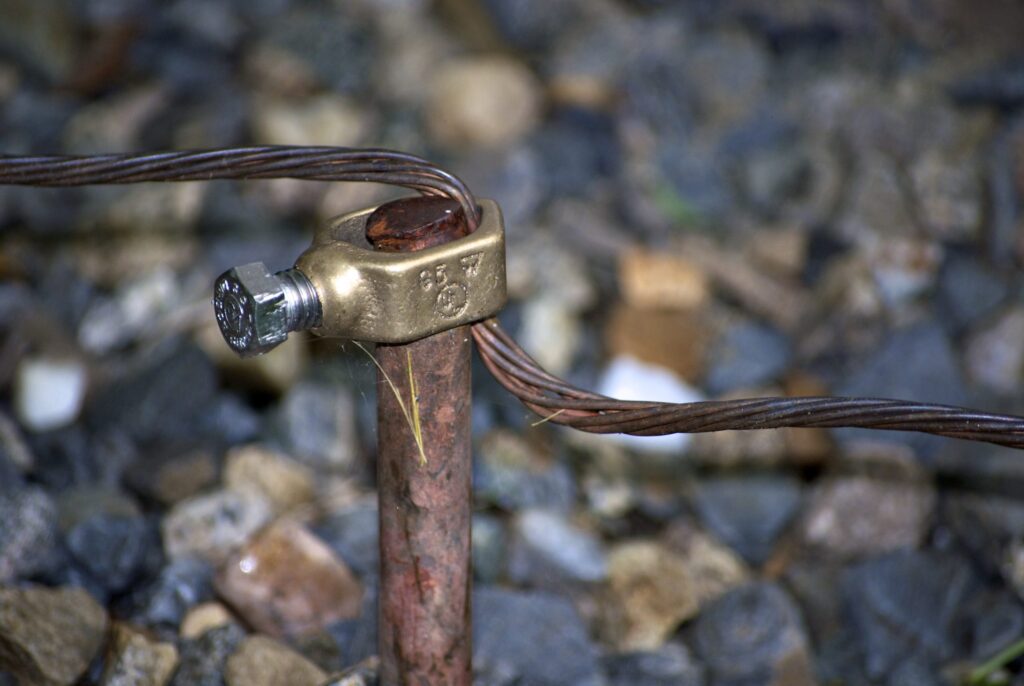
A ground rod clamp is a component for ensuring proper grounding and safety in electrical systems. It also helps to connect the ground wire to a ground rod which drives into the ground. The ground rod provides a low resistance path for electrical currents to safely dissipate into the earth. The clamp helps to securely attach the ground wore to the ground rod to establish a reliable electrical condition. This also helps to prevent the buildup of dangerous voltage levels and protects the transmission line equipment. Ground rod clamp is from materials such as copper, aluminum or copper alloys. These materials help to resist corrosion and various environmental conditions in south America. Examples include U-bolt clamp, bronze, parallel groove clamp and exothermic welding clamps. They find use in applications such as transmission lines, substations, telecommunications and industrial facilities.
Key features of ground rod clamp
The various features of the ground rod clamp help to ensure a secure and reliable connection in electrical grounding systems. These features also promote safety and effectiveness in various applications. The following are the key features of the ground rod clamp.
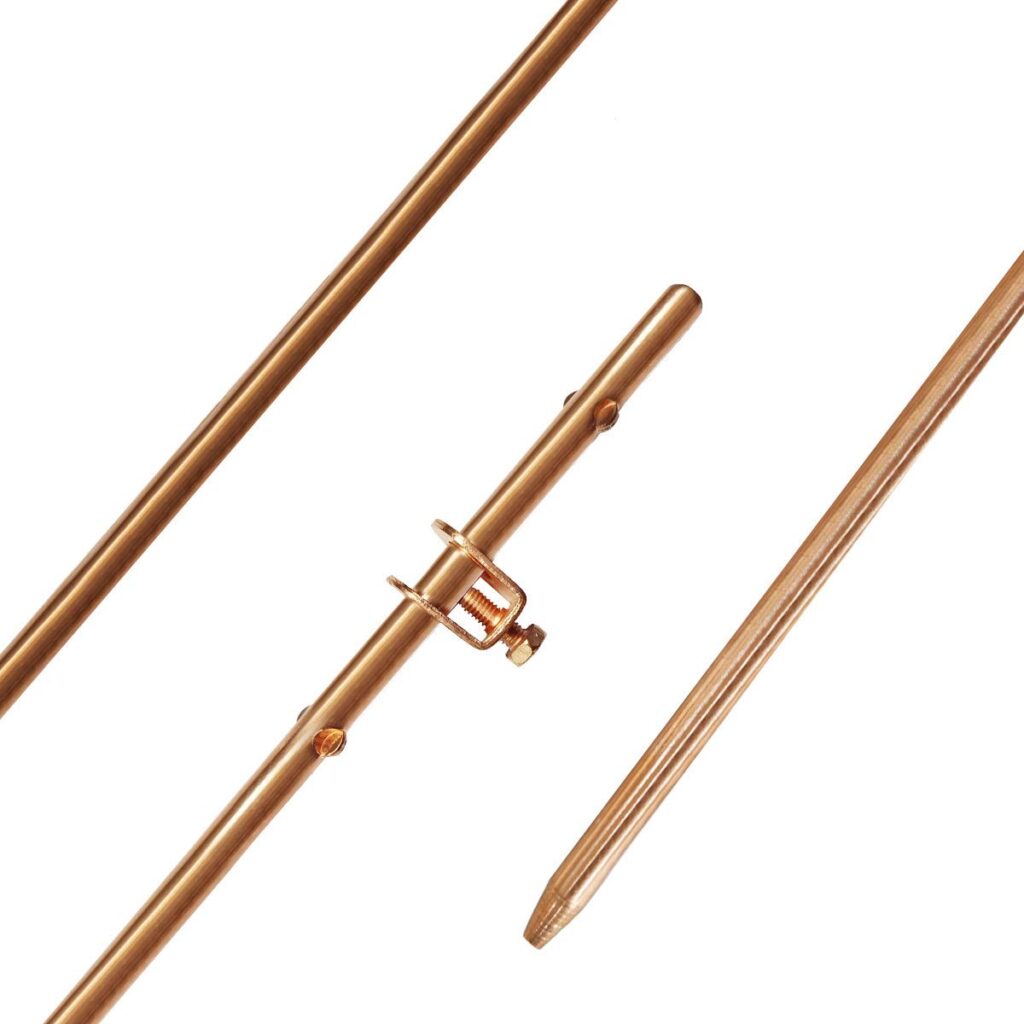
- Corrosion resistance – ground rod clamps should be resistant to corrosion to ensure a long-lasting and effective connection.
- Installation ease – they have simple features like screws, bolts or other mechanisms that ensure quick and secure connections.
- Tightening mechanisms – a reliable tightening mechanism is essential to ensure a firm and secure grip on both the ground wire and the ground rod.
- Durability – they also provide durability to withstand environmental conditions, mechanical stress and the electrical currents they may encounter.
- Material – the clamps are from materials that impact the clamp’s conductivity, corrosion resistance and overall durability.
- Adjustability – this feature allows them to hold various ground rod sizes suitable for different installation scenarios
- Conductor size – they are available in different sizes to accommodate various conductor sizes to match the clamps size with the diameter of the ground wire.
Selection and installation of ground rod clamp
The selection process is an important aspect of designing an effective grounding system. The right selection helps to ensure a secure and reliable connection between the ground wire and the ground rod. It includes considering several factors such as durability, application needs, ease of installation, type of ground rod, material and corrosion resistance. The installation process should establish an effective grounding system for electrical equipment. The following is a general installation process of the ground rod clamp.
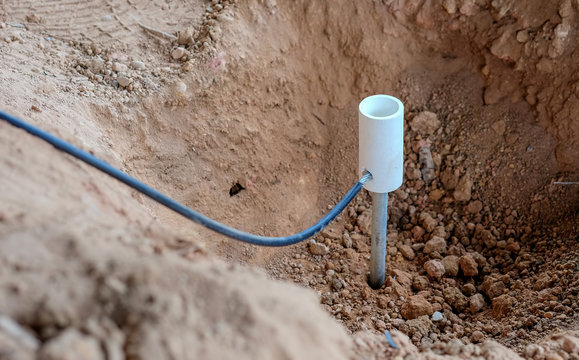
- Preparation – gather all the necessary tools required for the installation including ground rod clamp, ground rod, ground wire and fasteners. Ensure the selected ground rod clamp is suitable for the specific application.
- Ground rod preparation – ensure the ground rod is clean and free of any coatings or corrosion at the installation point.
- Ground wire preparation – strip the insulation from the end of the ground wire exposing the bare conductor.
- Positioning ground rod clamp – place the ground rod clamp on the ground at the desired installation point.
- Ground wire attachment – insert the stripped end of the ground wire into the designated space on the clamp. Ensure it id tightly secured and properly engaged.
- Verify the connection – check the connection to ensure the ground wire is securely attached to the ground rod. This is to reduce resistance and enhance the effectiveness of the grounding system.
- Inspection – conduct a visual inspection of the entire installation. Check for any signs of damage and loose connections.
- Connection to the system – connect the other end of the ground wire to the grounding system. Ensure a secure and low-resistance connection.
- Testing – perform a continuity test or use a ground resistance tester to verify the effectiveness of the grounding system.
- Documentation – keep a record of the installation details. This is including types of ground clamps and torque specifications.
Maintenance and inspection of ground rod clamp
Conducting regular maintenance and inspection helps to ensure the continued effectiveness and safety. It also helps to identify and address issues that may compromise the integrity of the connection. Additionally, the frequency of the inspection and maintenance depends on the various environmental conditions in South America. The following is a basic guide for the inspection and maintenance of ground rod clamps.
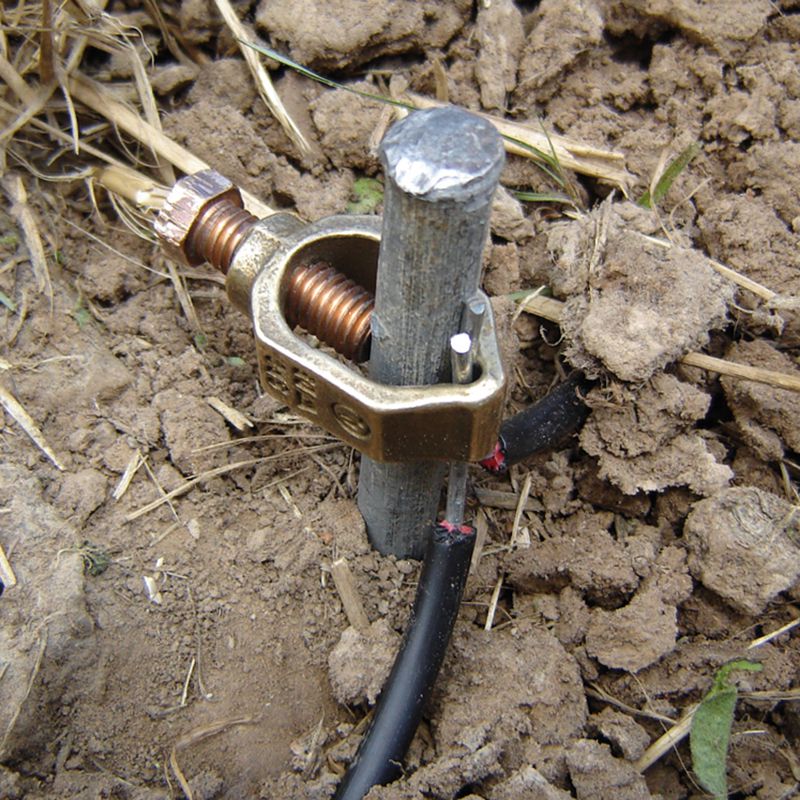
- Conduct regular inspections of the ground rod clamps to check for signs of corrosion, damage or wear.
- Clean the ground rod clamp and the connected ground rod to remove dirt buildup, debris and corrosion. This is using a wire brush or other suitable tools to remove the contaminants.
- Check the tightness of the ground rod clamp and tighten any loose bolts to ensure a secure connection.
- Examine the ground wire for any signs of wear, fraying or damage and replace the ground wire to maintain a reliable connection.
- Consider implementing extra measures such as corrosion inhibitors or protective coatings. This helps to prolong the life of the ground rod clamp.
- Periodically measure the resistance to ground using a ground resistance tester. This helps to ensure the grounding system is maintaining an acceptable level of conductivity.
- Perform a continuity test to verify that there is continuous and low-resistance path. This is between the ground wire and the ground rod through the clamp.
- Inspect the connections between the ground rod clamp, ground wire and the grounding system. Ensure all the connections are secure and free from signs of deterioration.
- Consider environmental factors that may affect the integrity of the grounding system. This includes changes in soil conditions, exposure to moisture or presence of corrosive substances.
- Review the documentation related to the installation of the ground rod clamp. Ensure the installation adheres to various guidelines.
Comparative analysis of ground rod clamps in South America
A comparative analysis involves assessing and evaluating different types or models based on various factors such as materials, design, features and applications. It also involves assessing the reputation of the various manufacturers and suppliers of ground rod clamps in the market. Additionally, it is advisable to seek professional help in the analysis to ensure proper selection. The method includes conducting research, compiling data, considering user reviews, evaluating industry recommendations and weighting factors. The following are the factors to include in the comparative analysis in South America.
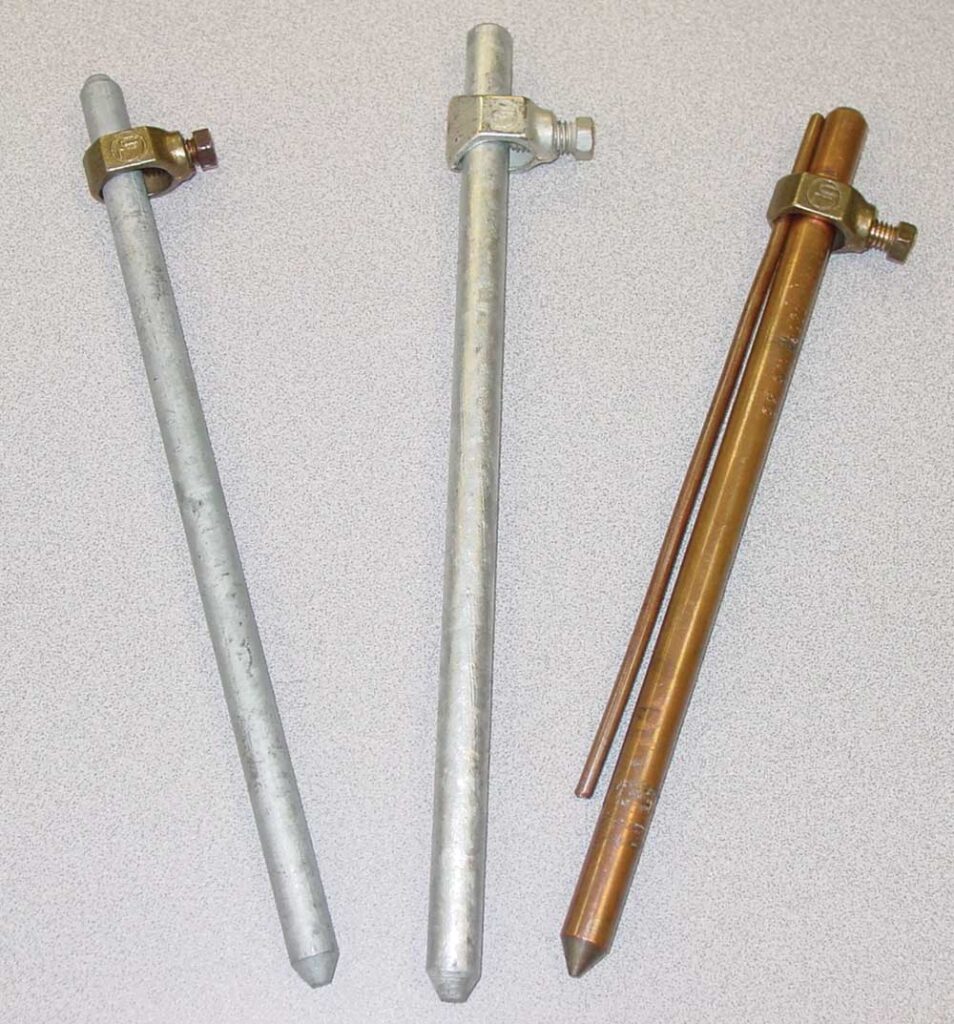
- Material – evaluate the materials used in different ground rod clamps. Common materials include copper, aluminum and copper alloys. Consider conductivity, corrosion resistance and durability.
- Adjustability – assess whether the clamps are adjustable to accommodate various ground rod sizes for different installations.
- Tightening mechanism – evaluate the tightening mechanisms of each clamp. This includes screws, bolts or other mechanisms.
- Application needs – consider the intended applications for each type of ground rod clamp.
- Durability – assess the overall durability of each ground rod clamp. This includes its ability to withstand environmental conditions, mechanical stress and electrical currents.
- Cost – compare the cost of different ground rod clamps and consider the upfront costs. This is depending on factors like durability and maintenance requirements.
Certifications and standards in South America
These standards and certifications govern the use of ground rod clamps in South America. Many South American countries adopt their own set of regulations or adhere to international standards. Also, it is important for manufacturers and suppliers to provide documentation indicating compliance with relevant standards. The following are standards and certifications in South America.
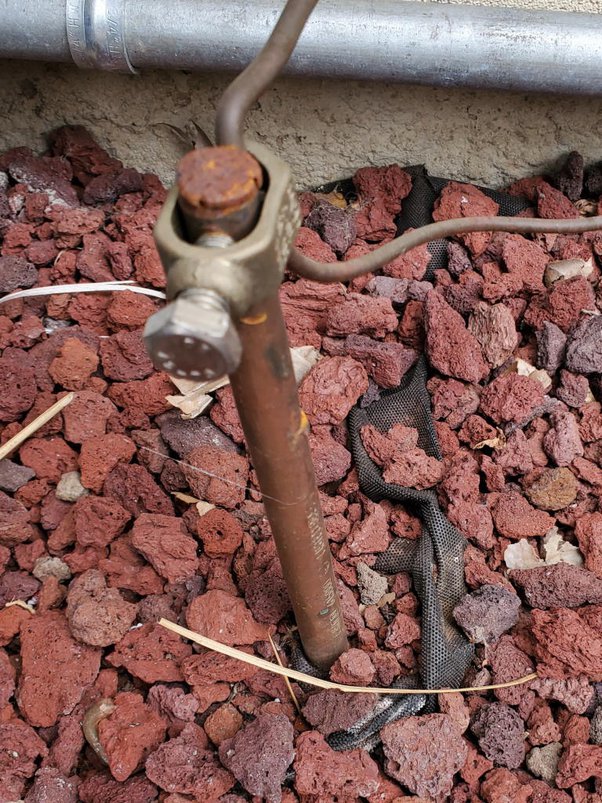
- IEC standards – this provides international standards for electrical and electronic components.
- National standards – these are specific standards for various countrie. This is including Brazil, Chile and Argentina.
- Local regulations – some countries have specific regulations for grounding systems outlined in their electrical codes.
- ISO certification – this certification ensures that a company follows internationally recognized quality management practices.
- IECEE CB scheme – This is an international system for the mutual acceptance of test reports and certificates. It deals with the safety of electrical and electronic components and products.
Regional market for ground rod clamp in South America
There are various factors that influence the regional market for ground rod clamps in South America. These factors include demand for electrical infrastructure, industrial development and compliance with safety standards. Additionally, it is important to take notes of specific country characteristics, local regulations and industry trends. The following are the factors that shape the market in South America.
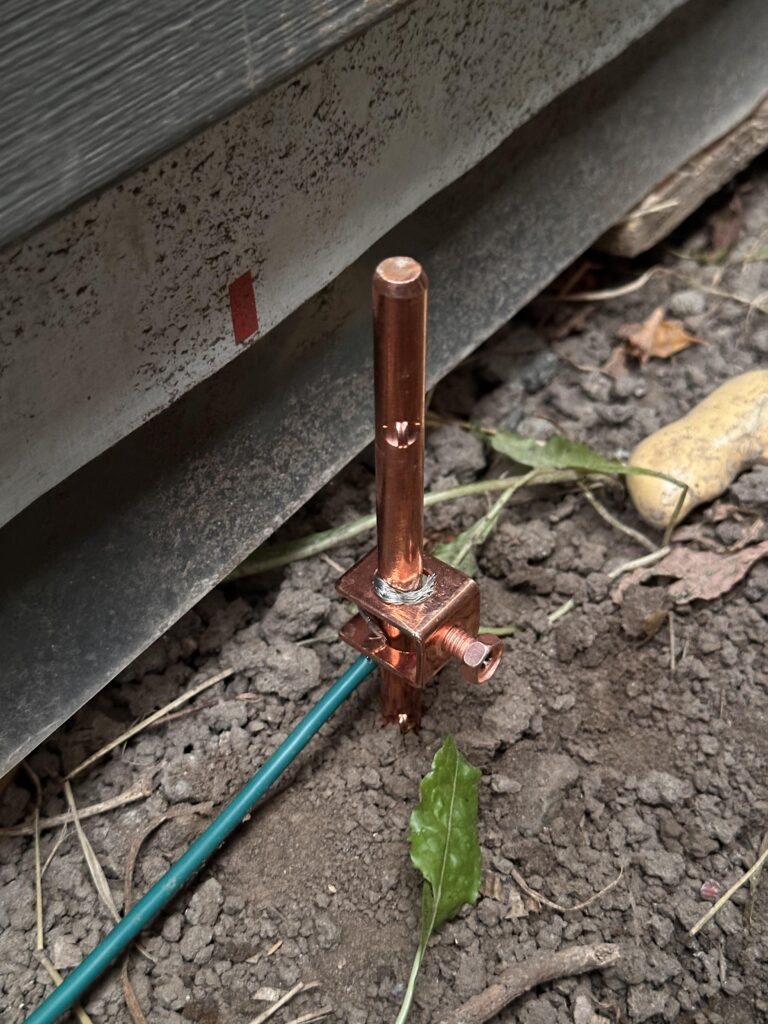
- Power generation and distribution – the growth of the energy sector leads to an increased need for reliable grounding systems.
- Renewable energy projects – the development of renewable energy projects contributes to the demand for grounding components.
- Government initiatives – government initiatives promote safety standards and the use of certified electrical components.which can influence the market.
- Telecommunication infrastructure – the expansion of telecommunications infrastructure contributes to the demand for grounding components.
Frequently asked questions
Ground rod clamps are essential components in electrical grounding systems. They establish a secure connection between the ground wire and the ground rod. This is to ensure the safe dissipation of electrical currents into the ground.
The size of the ground rod clamp should match the diameter of the ground rod and the conductor size. It is important to follow the manufacturer’s recommendations and guidelines for proper sizing.